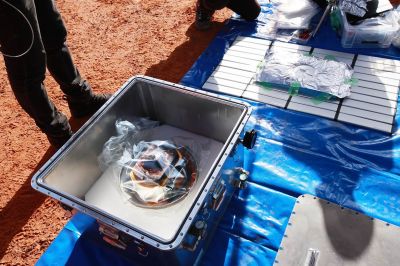The Japanese space agency has announced this weekend the successful landing of a capsule carrying asteroid materials in Australia. Now the agency hopes that the samples collected by Japanese space probe Hayabusa-2 could help shed light on the origin of life on Earth and the formation of the universe.
The capsule carrying samples from a space rock separated from the main spacecraft at 12:30 am Eastern time, about 12 hours before the scheduled landing when it was almost 125,000 miles from Earth. While entering Earth's atmosphere, it created a shooting-star-like vision when it entered the atmosphere.
An official narrating a live broadcast of the capsule said "6 years and it has finally come back to Earth," while images of officials from JAXA showed a cheerful moment at the space agency.



The Recovery
A few hours later the Japanese space agency confirmed the recovery of the asteroid samples, which are expected to amount to no more than 0.1 grams of material. The recovery became a success thanks to the beacons emitted by the capsule as it moved to Earth after separating from Hayabusa-2 on Saturday, December 5.
JAXA took it to Twitter and said, "We found the capsule! Together with the parachute! Wow!," It was recovered in the southern Australian desert, and will be processed before being sent to Japan. Hayabusa-2, which was launched in 2014, collected the precious materials from the asteroid Ryugu, around 300 million kilometers from Earth.
The probe collected the pristine material from below the surface and also dust from the surface that was stirred up by deploying an "impactor" into the asteroid Ryugu. It is believed that the materials collected from the asteroid have been unchanged since the time the universe was formed.
Earth and other celestial bodies went through drastic changes, such as heating and solidifying, as well as changing the composition of the materials, since the creation. But when it comes to smaller planets or asteroids, "these substances were not melted, and therefore it is believed that substances from 4.6 billion years ago are still there," said Hayabusa-2 mission manager Makoto Yoshikawa before the arrival of the capsule.
The capsule's return with the world's first asteroid subsurface samples comes weeks after US space agency NASA's OSIRIS-REx spacecraft made a successful touch-and-go grab of surface samples from another asteroid called Bennu. Meanwhile, recent reports said that China's lunar lander has collected underground samples and sealed them within the spacecraft for the return to Earth.









